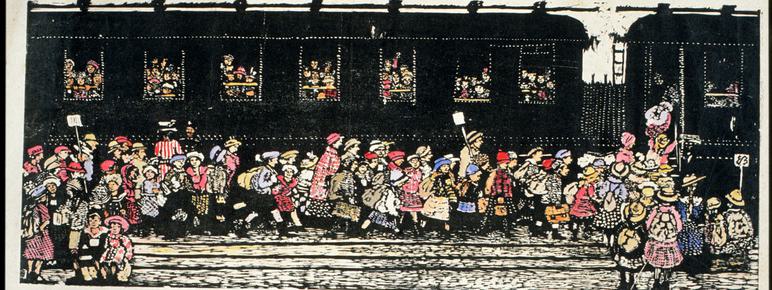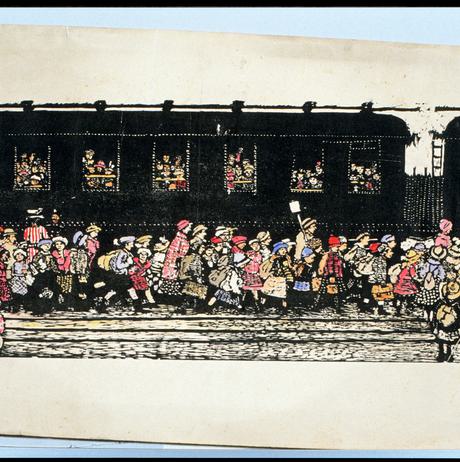
About Children's Images of Peace, War and Genocide
Children’s Images of Peace, War and Genocide is a touring exhibition presented as part of the National Arts Education Archive’s (NAEA) membership in the International Research and Archive Network for Children and Youth Drawings.
The exhibition includes children’s drawings from the NAEA’s collection and eight other countries – Germany, France, Czech Republic, Hungary, Russia, Finland, Switzerland and Canada. The images provide insight into major upheavals and events of the 20th century from the perspective of children.
Most of the artworks were created by children living through the events depicted in the images and preserved under difficult circumstances for posterity. Reflecting diversity in ways of seeing the world in times of dramatic societal changes, war, genocide, suffering and expulsion, they challenge our understanding of the impact on young minds of living through some of the most profound and appalling events of the 20th century.
Historical images created by children are now recognised as significant cultural assets worthy of protection. They reveal experiences that most of us have never had to undergo and have the luxury of knowing that we or our children never will. The exhibition aims to maintain a dialogue with the past.
You might also like
More- News

National Arts Education Archive’s children’s wartime art collection gains UNESCO recognition
25 April 2025 - Art Outdoors

Damien Hirst: The Hat Makes the Man
The Hat Makes the Man is based on a 1920 collage of the same name by the Surrealist artist Max Ernst. Hirst has made a sculpture version with bronze casts of wooden pallets, like a sculptural collage. - Art Outdoors

James Turrell: Deer Shelter Skyspace
The Deer Shelter Skyspace creates a place of contemplation and revelation, harnessing the changing light of the Yorkshire sky. It allows us to take time to sit, to think, and to contemplate; an open invitation to access a peacefulness that is often denied in our busy lives that abound with technology and speed. - News

Staff profile: Amanda Peach, Retail Programme and Product Development Manager at YSP
9 December 2025
